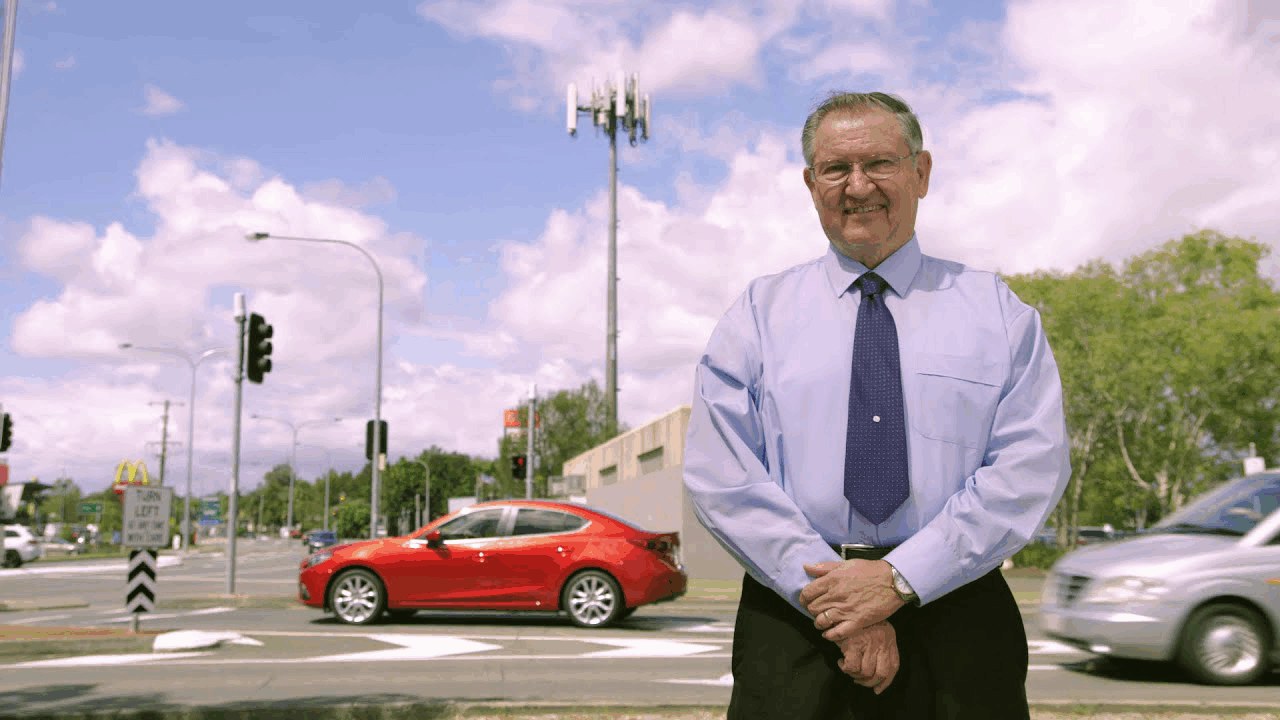Mobility Through the Ages - AMPS

There would be few people in the mobile phone industry in Australia with the same depth of experience and knowledge as Gary Rose, one of Telstra’s general managers in the Wireless Network Engineering team.
Gary’s worked on the engineering and planning of the Telstra mobile network in Australia since the mid-1980s.
So what network existed before Australians became truly ‘mobile’?
Prior to the introduction of an automatic mobile telephone service in the mid-1980s, there was a very small number of phones that were mobile but connected into the public network manually via switchboard operators. This is much the same way trunk calls were made, prior to the introduction of STD (subscriber trunk dialing).
The digital prefixes for the first automatic cellular mobile telephone service in Australia began with 007 and at the time they were regarded as the latest and greatest in phone technology, as was the man associated with those digits. You can imagine that those lucky enough to be able to afford the $3,000 to $4,000 to have a phone installed in their car would certainly feel a little like James Bond!
The 007 services in Queensland peaked at around 2,000 customers and with only Telecom Australia (as Telstra was called then) selling a basic voice service, sales and customers were fairly limited.
Immediately prior to the introduction of the Advanced Mobile Phone Service (AMPS) that had its origin in the USA, Telecom Australia introduced an Interim Manual Mobile Telephone Service as a stopgap measure in many regional cities that did not have the “007” service. Although customer numbers were low, the service did prove to be popular with businesses as it opened up new opportunities. For example, the skippers of fishing trawlers were able to arrange the sale of their catch even before they got back to port.
When the AMPS network was launched in 1987, the market became fully competitive and a large number of sellers entered the fray, along with the first fully handheld phones. These were affectionately known as ‘the brick’ because they had approximately the same length and breadth as a typical house brick but was about half as thick. They retailed for a cool $5,500.
We’ve come a long way since the days of the ‘brick phone’
We’ve come a long way since the days of the ‘brick phone’, to an age where downloading our favourite movies and videos is second nature and we use devices that conveniently fit into a pocket or hand bag. Nowadays, we can simply walk into a store, or shop online, and connect to the network within minutes. But it wasn’t always like that.
In the early days of the mobile network, capacity planning was done manually. Now, by comparison, capacity planning is done using sophisticated computer modeling techniques to ensure the network capacity meets the needs of customers on the network in any given location.
Gary recounts: ’I can still recall the weekly meetings with the sales and marketing team when the 007 service was first launched, where we would advise that the mobile network had sufficient capacity to allow the sales team to onboard another two or three customers. Before AMPS network, capacity was very limited and had to be managed manually almost on a daily basis. You have to understand that the technology that assists our lives today simply didn’t exist in the mid-1980s.’
During the late 1980s and 1990s it was extremely difficult to keep up with consumer demand as more and more outlets began to offer mobile phones and the market grew even more competitive.
Read part two: Mobility through the ages - GSM and SMS
Explore our mobility solutions